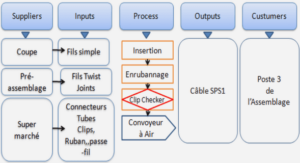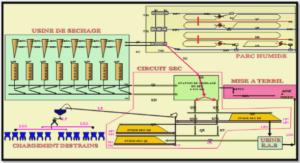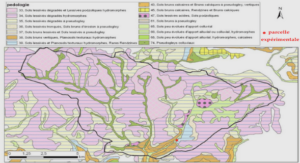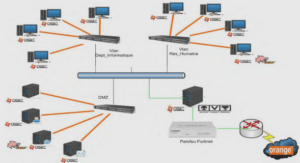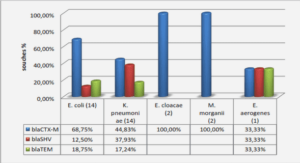Experimental composite design and sample preparation
Strengthening mechanisms in MMCs
The strengthening of materials is related to the introduction one or several kinds of obstacles to hinder the mobility of dislocations. The stress field due to the interactions between dislocations and solute atoms, as well as physical barriers (such as grain boundaries and second phase precipitates) may play a role in effectively pinning dislocation motion. The strengthening of Al-based MMCs is mainly contributed by two parties: Al matrix and dispersed ceramic reinforcements.
When compared with the corresponding unreinforced materials , it is well known that the introduction of ceramic particulate reinforcements in the metal matrix results in the enhancement of physical and mechanical properties of composites. The influence of reinforcement on the strength may be divided into two categories: direct and indirect strengthening.
General strengthening mechanism of Al matrix
Besides the strengthening effect contributed by the reinforcement, it is well known that the strength of MMCs is primarily derived from the strength of matrix alloys in MMCs with a low volume fraction of ceramic particles (< 25%). With respect to the strengthening matrix, there are four major strengthening mechanisms, i.e., work hardening, solid-solution strengthening, grain boundary strengthening, and precipitation strengthening. For most of these mechanisms, a range of theoretical expressions is available in the literature . In the present study, an extended assessment of each possible strengthening mechanism has been performed as it is very relevant to the high-strength, high-temperature matrix alloys
The influence of titanium
Due to the limited liquid solubility (0.17 wt.%) and the large solid solubility (1.7 wt.%) of Ti in Al, Al-Ti has a strong tendency to generate primary A^Ti during solidification in the conventional ingot metallurgy process, when the concentration of Ti is higher than the maximum liquid solubility . Furthermore, the solid solubility of Ti is still large at a lower aging temperature (for example, C400 = 0.18 wt.% Ti ). Thus, the formation of precipitates is not expected in the subsequent aging process, and the supersaturation is dramatically reduced, leading to the limited chemical driving force for solid-state nucleation as well as the small equilibrium volume fraction of the strengthening
phases. This phenomenon has already been reported .
Despite the fact that the addition of Ti did not contribute to the increase of strength in Al-Ti binary alloys, van Dalen et al. and Hyde et al.found that Ti indeed exhibited a positive influence to enhance the hardening effect in Al-Sc binary alloys
Al-matrix composites
The concept of a composite material, in general, is to synergize certain properties of its constituents, and to suppress the shortcomings of each of the constituents . This combination can result in a newly synthesized material having unique and useful properties for a spectrum of structural applications . The MMCs have combined metallic properties (ductility and toughness) with ceramic properties (high strength and high modulus), leading to greater strengths in shear and compression and higher service temperature capabilities . Commonly used reinforcement materials include carbides (e.g., SiC, B4C, TiC), nitrides (e.g., SÏ3N4, A1N), oxides (e.g., AI2O3), as well as elemental materials (e.g., C, B, W). The reinforcements may be in the form of continuous fibers, chopped fibers, whiskers, or particulates .
Early studies on MMCs addressed the development and behavior of continuous fiber reinforcement with the motivation of dramatically extending the structural efficiency of metallic materials while retaining their advantages, including high chemical inertness, high shear strength, and good property retention at high temperatures . Unfortunately and despite encouraging results, extensive industrial application of these composites has been hindered by high manufacturing costs, namely, high costs of the reinforcement fibers and advanced fabrication methods , as well as fabrication problems such as fiber damage, microstructural nonuniformity, fiber to fiber contact, and extensive interracial reactions .
B4C reinforcement
The reinforced B4C composite has a lower specific gravity of 2.51 g/cm3 (less than that of Al, 2.7 g/cm3), compared to 3.20 g/cm3 for SiC, and 3.96 g/cm3 for A12O3 , as well as a high impact and wear resistance, a high melting point , a good resistance to chemical agents, and a high capacity for neutron absorption , making itself a promising candidate for the reinforcement in an Al matrix composite.
Compared to many works on the Al matrix composite system using reinforcing SiC or AI2O3 particles, the studies on the B4C reinforced composites are relatively limited. This is probably due to the fabrication problems of AI-B4C composites via commercial casting. Since the initial wetting angle is large, it is difficult to obtain AI-B4C composites of full density . Moreover, severe interfacial reactions between B4C particles and liquid Al have led to the increase of reaction products during the casting process and consequently harmed the fluidity of the melt . Thus, several non-equilibrium methods, such as powder metallurgy , infiltration , cryomilling , and the shock-compacted method have been utilized.
Properties of AI-B4C composites
In general, particulate-reinforced composites exhibit enhanced stiffiiess and strength compared to unreinforced matrix materials. However, the improvement in stiffiiess and strength is generally obtained at the expense of ductility and fracture resistance. It is obvious that the strengths of the composites increase with the increase of B4C concentrations, while the ductility shows a contrary tendency. This relationship is independent of the fabrication process, because more load would be transferred to the reinforcement when the volume fraction is increased, which results in a higher ultimate tensile strength. Previous studies have revealed that smaller particles may provide more strengthening effects than the larger particles . For example, Kouzeli et al. reported that given a similar B4C volume fraction of approximately 50%, the AI-B4C composites with the average particles size of 29 /*m yielded a UTS of 219 MPa, that the UTS value was decreased to 161 and 130 MPa, when the particle size was increased to 58 and 82 , respectively.
|
Table des matières
Chapter 1 :Introduction
1.1 Background
1.2 Objectives
Chapter 2 :Literature review
2.1 General strengthening requirements for thermally stable composites
2.1.1 Strengthening mechanisms in MMCs
2.1.2 General strengthening mechanism of Al matrix
2.1.3 Precipitate coarsening theory
2.1.4 Requirement for high temperature MMCs
2.2 Thermal stability of matrix alloys
2.2.1 Selection of matrix alloys
2.2.2 Al-Sc binary alloys
2.2.3 Al-Sc-Zr ternary alloys
2.2.4 The influence of titanium
2.3 AI-B4C composites
2.3.1 Al-matrix composites
2.3.2 B4C reinforcement
2.3.3 Matrix/reinforcement interface in AI-B4C composites
2.3.4 Properties of AI-B4C composites
Chapter 3 :Experimental
3.1 Experimental composite design and sample preparation
3.1.1 AI/B4C couples
3.1.2 AI-B4C composites
3.2 Heat treatment
3.2.1 Aging for precipitation-strengthening
3.2.2 Long time annealing
3.2.3 Post-rolling heat treatment
3.3 Microstructure observation
3.3.1 Optical microscopy
3.3.2 Scanning electron microscopy (SEM)
3.3.3 Electron backscatter diffraction (EBSD)
3.3.4 Transmission electron microscopy (TEM)
3.4 Evaluation of mechanical properties
3.4.1 Hardness
3.4.2 Compression test
3.5 Hot rolling process
Chapter 4 :Effect of Sc, Zr and Ti on the interfacial reactions
4.1 Introduction
4.2 Results
4.2.1 Morphology and type of interfacial layers
4.2.2 Interfacial micro structure of B4C/AI-SC alloy
4.2.3 Interfacial micro structure of B4C/Al-Zr alloy
4.2.4 Interfacial microstruture of B4C/AI-T1 alloy
4.2.5 Interfacial micro structure of B4C/Al-Sc-Zr-Ti alloy
4.3 Discussion
4.4 Summary
Chapter 5 :As-cast micro structure and precipitation evolution
5.1 Introduction
5.2 Results
5.2.1 Microstructure of prefabricated material
5.2.2 Microstructures of as-cast composites
5.2.3 Precipitation strengthening
5.3 Discussion
5.3.1 Interfacial reactions
5.3.2 Solute concentration of Sc and Zr in the matrix
5.3.3 Precipitation strengthening in as-cast condition
5.4 Summary
Chapter 6 :Precipitation strengthening during isothermal aging at 300 – 450 °C 101
6.1 Introduction
6.2 Results
6.2.1 Age hardening response
6.2.2 Evolution of precipitates
6.3 Discussion
6.4 Summary
Chapter 7 :Thermal stability o f mechanical properties at elevated temperature
7.1 Introduction
7.2 Results
7.2.1 Age hardening response
7.2.2 Long time annealing
7.2.3 Micro structural analysis
7.3 Discussion
7.3.1 Effect of the grain size on mechanical properties
7.3.2 Effect of the interfaces on mechanical properties
7.3.3 Effect of precipitate coarsening on mechanical properties
7.4 Summary
Chapter 8 :Hot rolling of Sc and Zr containing composites and the post-rolling heat treatment
8.1 Introduction
8.2 Results
8.2.1 The hot rolling processability of composites
8.2.2 Microhardness of hot-rolled composites
8.2.3 Influence of the post-rolling heat treatment on the microhardness of hotrolled composites
8.2.4 Micro structural evolution
8.3 Discussion
8.4 Summary
Chapter 9 :Conclusions and Suggestions for future work
9.1 Conclusions
9.2 Suggestions for future work
![]() Télécharger le rapport complet
Télécharger le rapport complet

